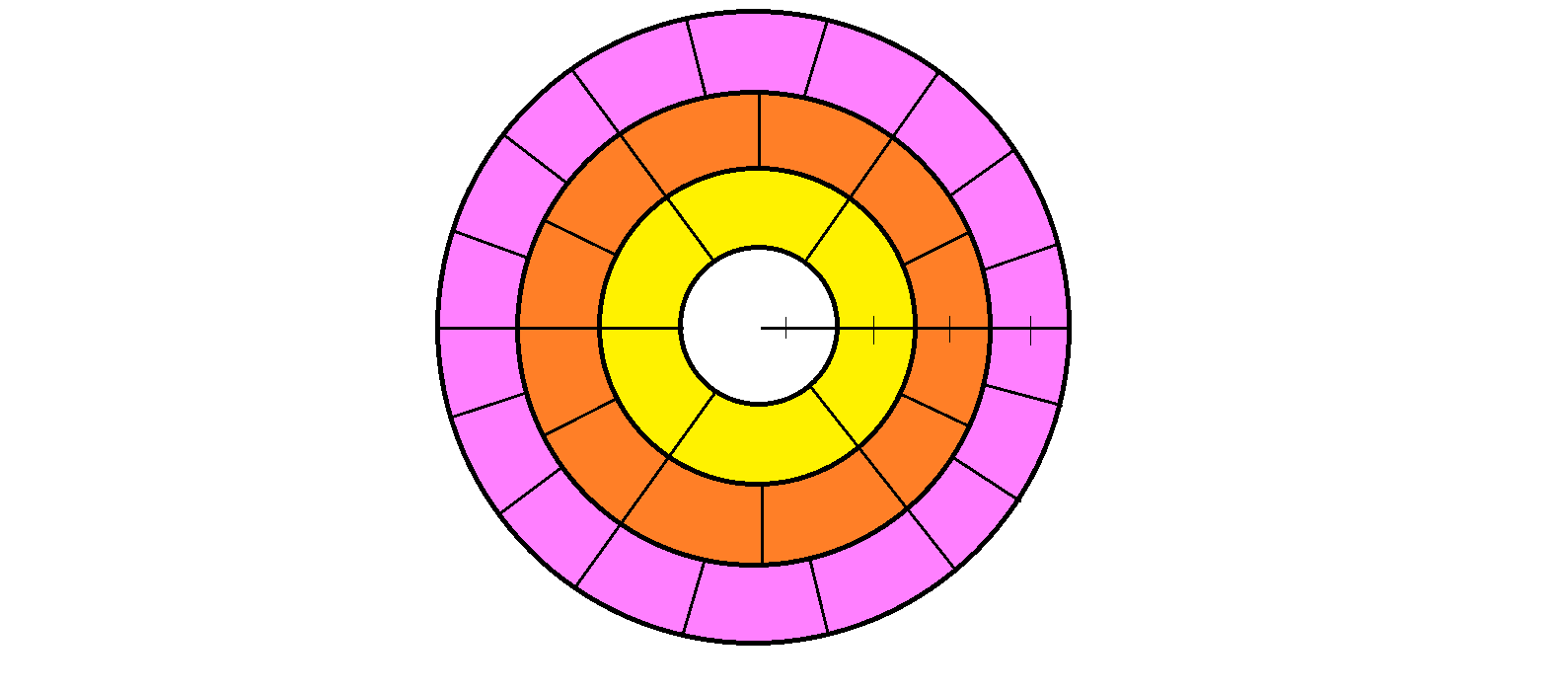Baumkuchen
A baumkuchen or split cake has a hollow unit circular area in the middle with successive ring with the same unit radius, in which the first ring is divided equally in 6 portions, second ring in 12, third ring in 18, and so on, as shown below:

As the ring progresses infinitely, what is the area ratio of the unit circle to each portion of the ring?
The answer is 3.
This section requires Javascript.
You are seeing this because something didn't load right. We suggest you, (a) try
refreshing the page, (b) enabling javascript if it is disabled on your browser and,
finally, (c)
loading the
non-javascript version of this page
. We're sorry about the hassle.
The area of the n t h ring = π ( n 2 ) − π ( n − 1 ) 2 = π ( 2 n + 1 ) .
The division progresses as an arithmetic sequence of 6 n . Thus, each portion of n t h ring = 6 n π ( 2 n + 1 ) .
As a result, the area ratio = lim n → ∞ 6 n π ( 2 n + 1 ) π = lim n → ∞ 2 n + 1 6 n = 3 .